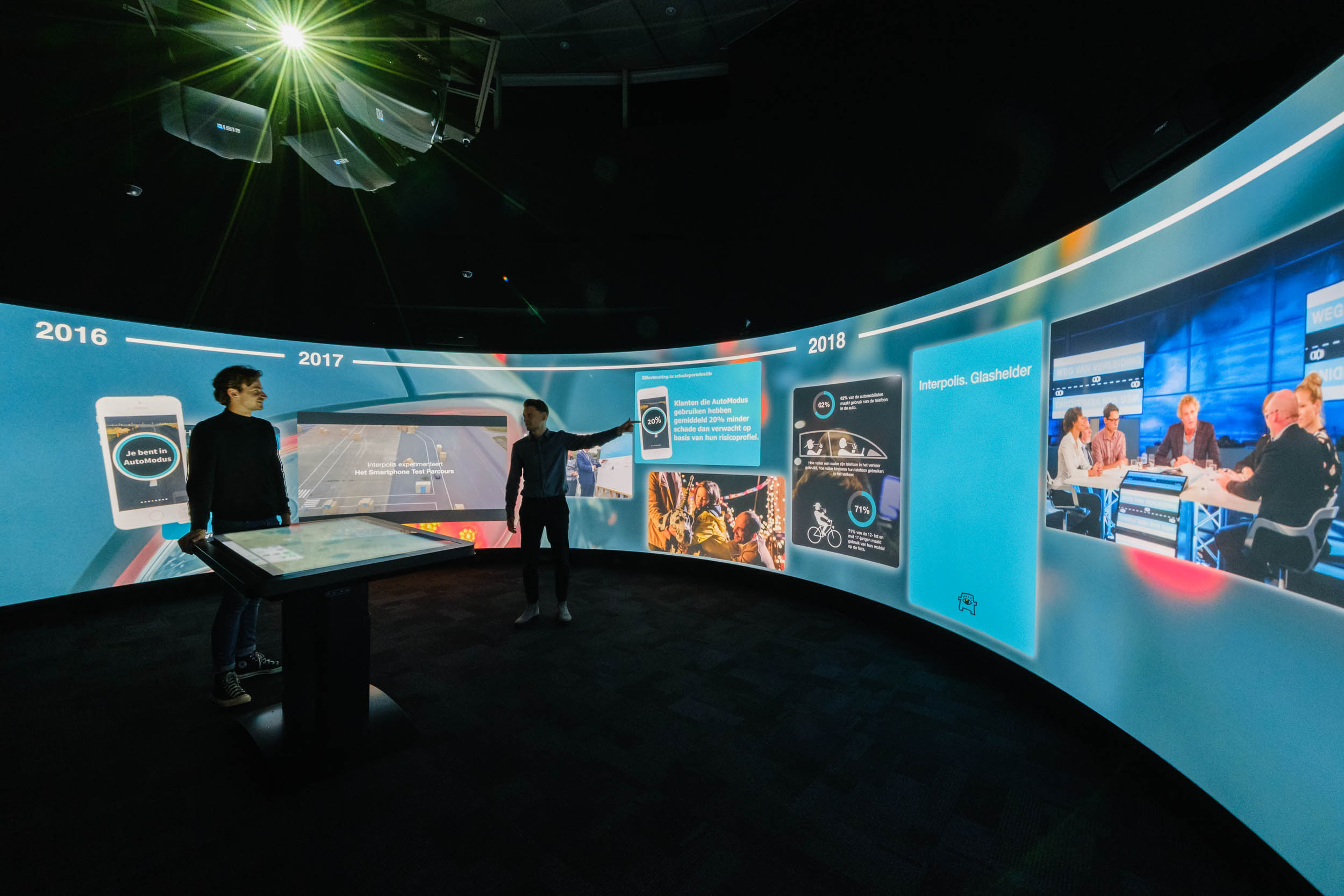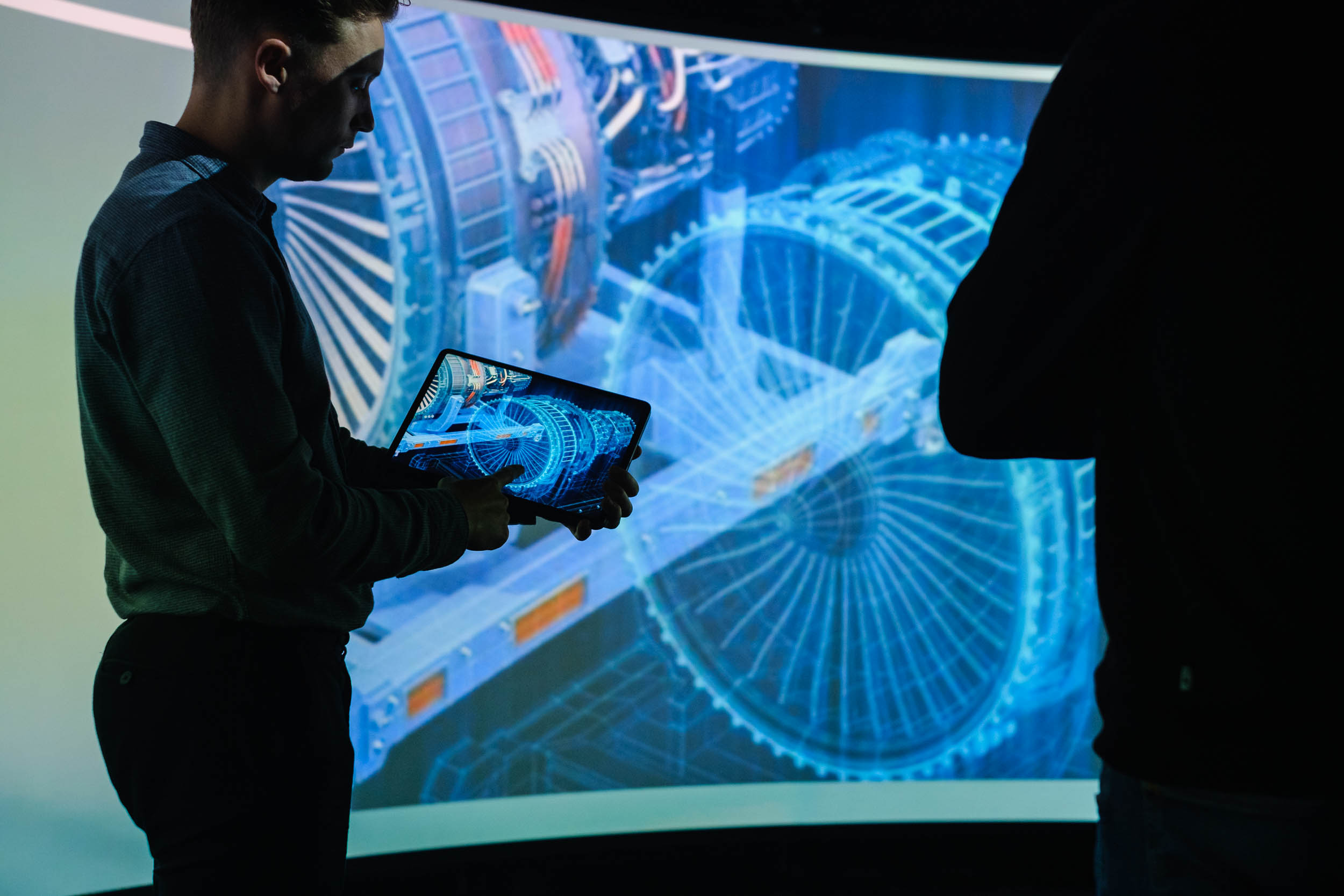How to spice up your presentations and grab attention
Not everyone gets nervous before making a presentation, but a lot of us do. No matter how experienced you are in the art of ‘presenting’, it’s only natural to feel a buzz of excitement or nerves before stepping into the spotlight of scrutiny.
This ‘buzz’ can help keep us on our toes, but behind this energy lurks a nervous anticipation about how your presentation will be received. Will they like it? Are your ideas sufficiently well explained and backed with evidence? And, most of all: Is the audience going to find it interesting enough to stay engaged and pay attention?
While we don’t want to take away the buzz of presenting, we do want to eliminate the fear by ensuring that the audience is fully engaged throughout. To make your presentation captivating from beginning to end, let’s first look at how standard presentations fall short, and see how they can be bumped up to the next level and beyond.

Yet another ‘standard’ presentation
Presentations typically still consist of a person talking while they flick through a slide deck or PowerPoint.
There are two main reasons for this predictable, ‘standard’ format: First, it’s easier than taking a totally new approach; and secondly, there’s fear about how something ‘new’ will be received.
It’s reasonable to worry about straying too far from the established norms, but there’s still a tremendous scope for improvement without totally rewriting the overall pattern.
Despite all the hard work that went into it, standard presentations are missing certain features that prevent audiences from being fully engaged or persuaded by your presentation. These problems are repeated over and over.
Problem #1: It feels like a lecture
People don’t like to be lectured. To drive engagement, emotions must be stimulated and activated. The most effective way to do this is with digital stories. Digital storytelling is a proven tactic for motivating the audience with powerful emotions (we’ll explore this more later).
Regardless of audience size, digital storytelling turns even the largest audiences into an audience of one – because each person is fully engaged.
Problem #2: It doesn’t feel personal
Smaller class sizes are more effective, and students typically rate the effectiveness of small groups higher than larger ones. Studies have also shown that experienced lecturers subconsciously switch linguistic tactics with different group sizes to keep them engaged with more personal approaches.
As the audience grows, more people become disengaged. They’re unable to contribute, and the conversation moves rapidly in a direction that isn’t relevant to them. This effect is measurable even when group sizes exceed just five people.
If your presentation is just a simple lecture, then it can quickly become impersonal for this very reason – you’re dominating the conversation, and it isn’t personally interesting to the audience.
Make your presentation more personal by turning your audience into a cohesive group. When a group of people is convinced that they’re part of a team, they think and behave differently to an audience of individuals.
Leverage your ‘soft’ communication skills to address specific individuals (or departments) in your presentation and illustrate how they all contribute to the big picture. Instead of struggling to see how something affects them, they become engaged and motivated to find solutions for their Team. Digital storytelling can bring together individuals with a shared experience, using emotive triggers and relatable stories that trigger a sense of empathy.
Problem #3: It’s not interactive
Interaction is a special form of participation because it alters the trajectory of the whole event. This is empowering for audience members, who become more engaged, and it helps your presentation become much more targeted as the interaction becomes a self-defined personal experience.
When the audience can interact and refine the information they are presented with, it’s capable of being more relevant and persuasive, compared to a simple PowerPoint presentation that can only go in one direction: on and on.
How digital storytelling overcomes the challenges of presenting to a modern audience
People today are more distracted than ever. Smartphones constantly beg us to pay attention and check the latest update. Or, as Chamath Palihapitiya, former Vice President of User Growth at Facebook, puts it: “The short-term, dopamine-driven feedback loops that we have created are destroying how society works.”
Phones have been designed to be as addictive as possible, using extensive research and a proven formula for ‘hacking’ the human brain. This causes the release of select neurotransmitters (mostly dopamine) that keep people addicted and distracted. Fighting back against this isn’t easy, but you can use something even more powerful to overpower these distractions: digital storytelling.
While smartphones and other ‘gamified’ digital distractions rely primarily on dopamine, digital storytelling uses three neurotransmitters. Combined, these can override the distractions of modern life by using our brain’s natural affinity for stories:
- cortisol to stimulate awareness,
- dopamine to create engagement and enjoyment, and
- oxytocin for instilling empathy.
- endorphins, serotonin, and even more dopamine when you add some humor, increasing the positive experience
Our brains are already wired for storytelling, because it’s an evolutionarily vital trait that helped our ancestors learn without direct experience – using this natural mechanism just makes sense.
Digital storytelling is most effective when used in an Immersive Experience or with a large screen, as these totally envelop the audience and fill the senses. An experience like this is a serious step-up from the predictable and unengaging PowerPoint presentations that people have come to expect and dread.

Best practices with Presentations (including PowerPoint
There are rules that can make your presentations more effective, or more engaging. Two key ones are:
- The 5-5-5 rule : Gives fixed maximum values for text on slides, keeping them as a lightweight visual support for your presentation, instead of becoming a dumping ground for tedious details.
- The 10-20-30 rule: Recognizes that no one wants to sit through a presentation with more than 10 slides, pay attention for more than 20 minutes, or squint at text with a font size smaller than 30.
Remember that the audience is there for the experience. Anything that can be written down could be sent as an email – so a good presentation should be an opportunity for building a stronger relationship. For this reason, people and experience must be the focus, and not just the slideshow.
Immersive Presentations Win Deals
There are many different apps you can use to build a slideshow for your presentation, including PowerPoint, Google Slides, Prezi, Haiku Deck, Canva and more. You can include interactive content with some of these, but they’re still just minor variations on a slideshow theme. To offer a unique experience, you should use your slideshow as part of a bigger, better package.
First, look carefully at your goal. This is usually some form of persuasion, for example: an increased budget, winning a deal, or attracting investment.
Information alone is rarely enough to drive a decision. In fact, decisions are often made contrary to what the facts tell us. If you want to persuade, then emotion needs to be in your strategy. Compelling storytelling will stimulate the right emotions and help finalize a deal when all the facts are there, but the audience needs a ‘gut feeling’ to tell them to act.
At Purple, we see leading companies around the globe using our digital storytelling solutions to break down barriers, grab attention, and make connections with new customers. They’re crafting unique experiences that immerse audiences in an engaging and interactive world. Your next presentation can do this too.
We offer two solutions that give your company the capabilities it needs to execute amazing and persuasive presentations: StreamIX and Virtual Studio. Both give presenters a full toolkit for multimedia and interactive presentations that can blend digital storytelling with traditional slideshows, media assets, and other digital tools including 3D models that can be explored by audience members.
Interested to learn more? See some of our work, or get in touch and start a conversation.

Digital Storytelling FAQs
What’s the best software for making presentations? There are numerous apps that can be used to make a slideshow presentation, including Haiku Deck, Prezi, Microsoft Powerpoint, Canva and Google Slides. Almost every single
What strategies can I use for persuasive presentations? Some people use 4 essential strategies for persuasive presentations, but there are more: 1. Start with you, who you are and why the subject matters to establish your authority. 2. Use facts, data and knowledge as proof. 3. Use emotion to stimulate action. Digital storytelling is most effective for this. 4. Use metaphors or other ways of making the subject relatable to the audience. 5. Don’t be boring. Be brief and don’t labor the details.
How do I make my PowerPoint presentation interactive? Making a presentation interactive can boost engagement and retention, but it’s not always easy. A lot can be done with the style and execution, by using ice-breakers and body language. Technical interaction can also be added with media assets, gamification, and digital storytelling. Using an immersive experience room can give the full breadth of possibilities for touch-screen interaction and 3D immersion.
What’s the rule of 3 in presentations? There are a few ‘rules of three’ – why? Because triplets are easy to remember. The first ‘rule of 3’ refers to presenting facts in this format: bitesize, and three at a time. The second rule is the ‘rule of 3 S’s’, which consists of Structure, Story, and Self. This says that your presentation should have these three elements: A clear structure, a compelling story, and a clear idea of who YOU are, including stories from your own experiences that relate to the material.
What’s the Return-on-Investment for a Briefing Center? Your Briefing Center will provide the greatest Return-on-Investment even faster if it is used as often as possible. With the Hyro digital storytelling software, every department can use the Briefing Center for their own fully branded experience. Moreover, the main goals for the Sales and Marketing teams can be better achieved with more accurate brand experiences that properly match each potential client.
How do you make a presentation less boring? To make a presentation less boring, use the minimum of slides and facts. Keep the slideshow element a small, supporting role in a spectacular show that explores concepts in different ways. Use media assets that contribute value. Make your presentation relevant to the audience with digital storytelling that reflects their own situation and struggles.









